I first became aware of this Decline of Post Oaks when visiting a Texas A&M AgriLife Extension booth at an annual trade show several years ago. I had been aware of how the severe drought in 2011 was continuing to plague our trees even more than a decade later, but had not heard of the Post Oak Decline. The incidence of Rapid Decline began in earnest after the severe drought of 2016. Since then I have experienced first hand the devastation this has caused to so many stately old trees.
Since Post Oaks are highly resistant to Oak Wilt and are not susceptible to any major pathogens, we rarely saw anything more than minor diseases and pests affect this species until 2011. Post oaks are quite drought resistant and grow best in well-drained sandy, rocky, nutrient deficient soils in the Cross Timbers region of Texas.
What contributes to Rapid Decline of Post Oaks?
Varying extremes in water availability, as in drought or extreme rain events can weaken the trees and make them more susceptible to attack by insects and disease. These extremes cause a change in the way the tree uses stored carbohydrates to cope with the induced stress. The carbohydrates (starches) that are normally stored in the roots during normal rainfall and temperatures are mobilized and depleted to make adjustments to regulate water loss from the leaves. With reduced carbohydrate reserves, the tree is no longer able to produce healthy growth and is now predisposed to disease and pests that normally do no harm.
What can be done to control Rapid Decline?
The key to controlling Rapid Decline is to keep the tree as healthy as possible with methods that are under our control. While not practical in woodland and rangeland settings, some practices may be of benefit in urban settings.
If soil is compacted, it can be aerated.
If surface drainage is an issue, it can be corrected.
If over watering is an issue due to new lawns being established under the trees, lawns can be removed and mulch brought in to lessen the stress of too much water.
Mulching under the canopy to reduce stress from drought can mitigate root loss. (Do not allow the mulch to touch the trunk of the tree.)
What type of issues will occur to trees experiencing Rapid Decline?
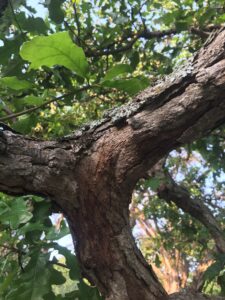
Bark loss due to infection by hypoxylon canker.
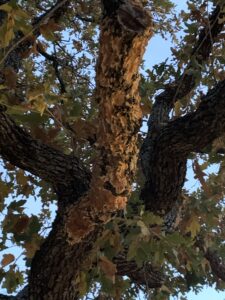
Internal fungal diseases causing rot to spread throughout the tree.
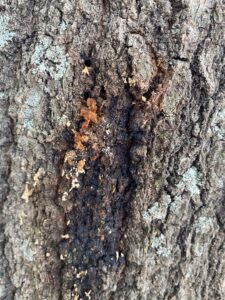
Borer injury due to the infestation of borers in a weakened tree.
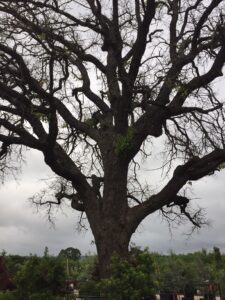
Root loss and death due to drought or saturated soils.
In summary, providing ALL of our trees with adequate water during a drought, improving drainage where there are issues and being aware of rapidly changing climatic conditions can help to prevent repeated exposure to these stressful conditions.
If you have a Post Oak that is declining, make an appointment with a Certified Arborist asap to have it evaluated. While remediation is not always possible, early diagnosis is key.

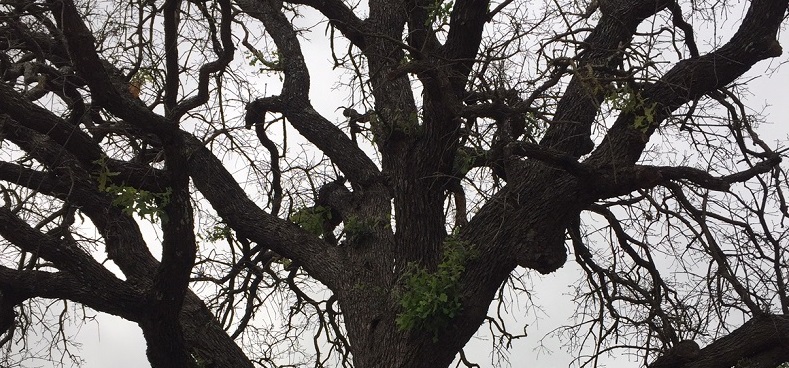
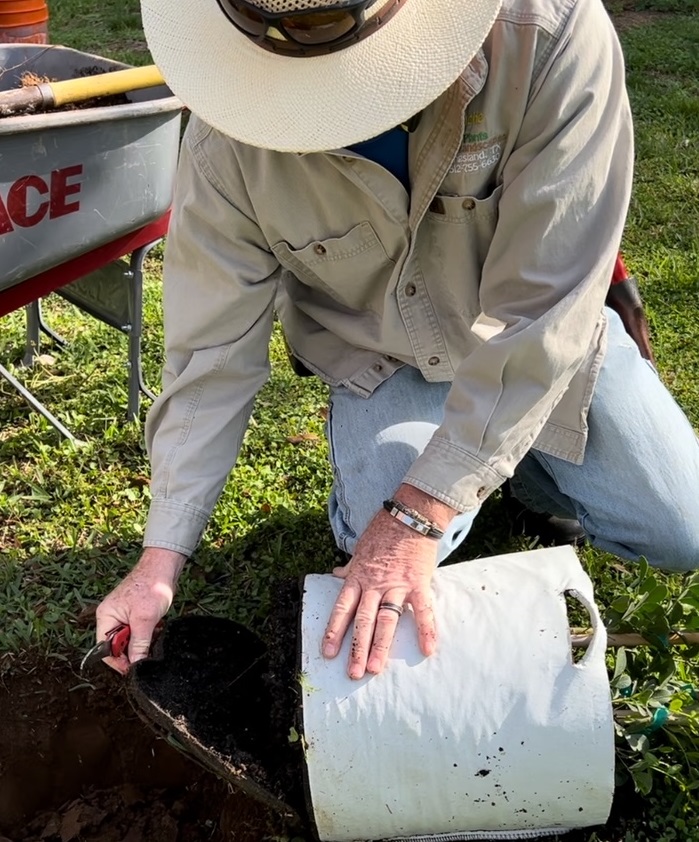


Leave A Comment